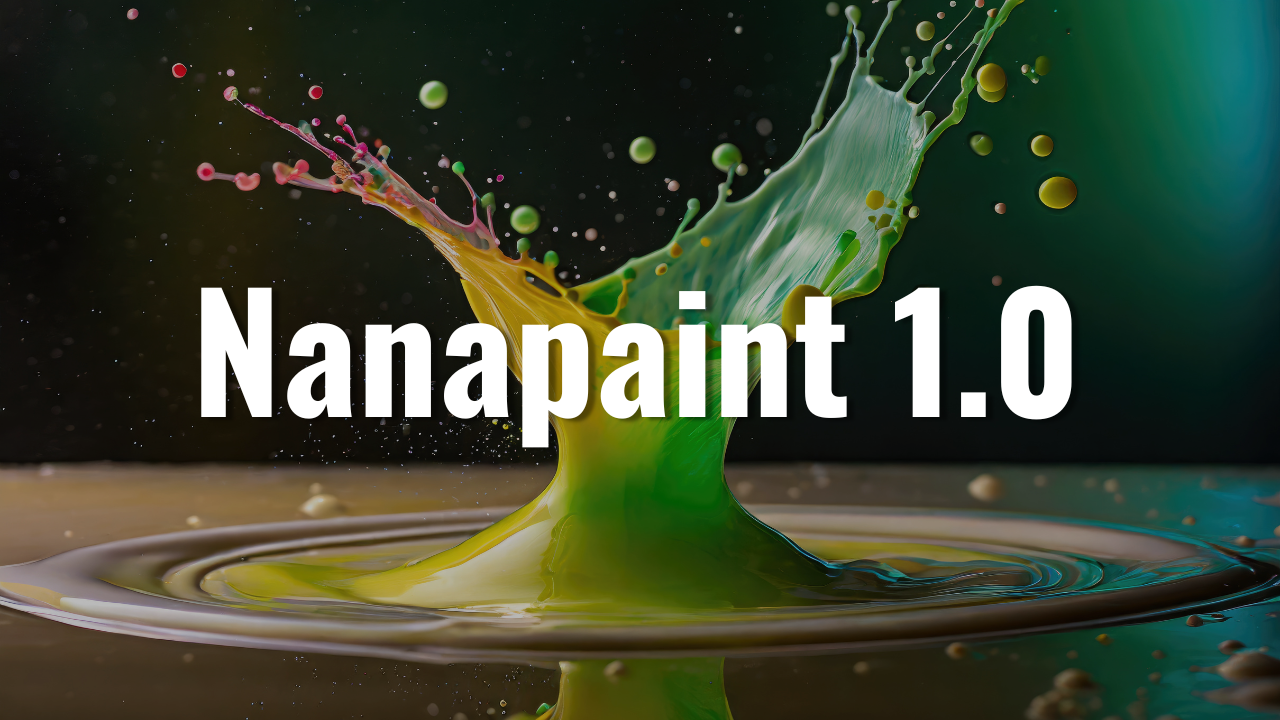Nanapaint 1.0: Pixel art, a unique visual style characterized by blocky, low-resolution graphics, has captivated audiences for decades. Its origins trace back to the early days of video games and computers, where limitations in technology led to a charming, distinct aesthetic.
Despite the advancements in graphics, pixel art continues to thrive. Its nostalgic appeal, simplicity, and versatility have secured its place in various creative fields, from video games and animation to web design and even fine art.
As the demand for pixel art tools grew, a diverse range of software emerged, each offering its own set of features and functionalities. Among these stands Nanapaint 1.0, a veteran in the pixel art scene.
While newer, feature-rich software dominates the market, Nanapaint 1.0 remains a curious case. This blog post delves into its history, features, and potential relevance in today’s world, exploring whether it’s a hidden gem or a relic of the past.
A Blast from the Past: Unveiling Nanapaint 1.0’s Origins
Birth of a Pixel Art Pioneer
Nanapaint 1.0 first emerged in the (mention the year/decade of release), a time when pixel art was a dominant force in the digital world. Originally conceived as a simple image creation tool, it catered to a specific audience: hobbyist pixel artists and early game developers.
Initial Reception and Impact
Upon its release, Nanapaint 1.0 garnered a mixed reception within the pixel art community. Its user-friendliness and resource efficiency resonated with users, while some may have found its basic feature set less appealing. Despite its initial impact, Nanapaint 1.0 saw minor updates over time, aimed at addressing compatibility issues and improving specific features.
Unpacking the Toolbox: Nanapaint 1.0’s Functionality
Nanapaint 1.0 offers a set of tools designed for creating pixel art. Let’s delve into its core functionalities:
Canvas and Tools:
Imagine a blank canvas where you can use various tools like brushes, pens, and shapes to build your pixel art creations. Nanapaint 1.0 provides these basic tools, allowing you to draw lines, fill areas, and create different shapes.
Color Palettes and Manipulation:
Just like an artist’s palette, Nanapaint 1.0 offers a selection of colors you can use in your artwork. You can also mix and adjust these colors to achieve the desired shades and effects.
Animation Capabilities (if applicable):
Some versions of Nanapaint 1.0 may include basic animation features, allowing you to create simple animations by creating multiple frames with slight changes.
Import/Export Options:
Nanapaint 1.0 lets you import existing images (in compatible formats) and export your creations as image files, making it easy to share your work or use it in other projects.
Additional Features:
Depending on the specific version, Nanapaint 1.0 may offer other features like text tools, layer support (a way to organize different parts of your artwork), or specific effects filters.
Comparison with Modern Software:
While It provides the essentials for pixel art creation, it’s important to note that contemporary software offers a wider range of features. Modern tools often include advanced features like more precise brush controls, complex animation capabilities, layer blending modes, and compatibility with various file formats.
Weighing the Pros and Cons: Nanapaint 1.0 Strengths and Weaknesses
Every tool has its own set of advantages and disadvantages. Let’s explore the strengths and weaknesses of Nanapaint 1.0:
Advantages:
- Simplicity and Ease of Use: It is known for its straightforward interface and intuitive controls, making it easy for beginners to pick up and start creating pixel art.
- Lightweight and Efficient: This software is generally resource-efficient, requiring minimal computer power to run smoothly, making it suitable for older or less powerful machines.
- Unique Visual Style: The limitations of Nanapaint 1.0 can sometimes lead to a distinct visual style, often characterized by a charmingly “retro” aesthetic.
- Cost-Effectiveness: Depending on the version, It may be free or open-source, making it an accessible option for budget-conscious users.
- Strong Community Support (if applicable): Active online communities may exist around it, offering tutorials, resources, and support to users.
Disadvantages:
- Limited Functionality: Compared to modern pixel art software, It often offers a more basic set of features, lacking advanced tools and functionalities.
- Outdated Interface or Design: The interface of Nanapaint 1.0 may appear dated by today’s standards, potentially requiring some adjustment for users accustomed to more modern software.
- Compatibility Issues: Depending on the version and operating system, Nanapaint 1.0 may encounter compatibility issues with newer computers.
- Lack of Certain Features: Modern software often boasts features like complex animation capabilities, layer blending modes, and compatibility with various file formats, which may be absent in Nanapaint 1.0.
Nanapaint 1.0: A Relic or a Viable Option?
While Nanapaint 1.0 may not be the most feature-rich software in today’s landscape, it still holds potential relevance in specific scenarios:
Suitable Scenarios:
- Beginner’s Playground: Nanapaint 1.0’s simplicity makes it an excellent choice for those new to pixel art. Its intuitive interface and basic tools offer a gentle learning curve, allowing beginners to grasp the fundamentals without feeling overwhelmed.
- Embracing the Retro Aesthetic: The limitations of Nanapaint 1.0 can sometimes lead to a distinct visual style that some creators actively seek. This “retro” aesthetic can be perfect for projects aiming for a nostalgic or vintage feel.
- Limited Resources: For users with older or less powerful computers, Its resource efficiency can be a major advantage. It runs smoothly even on modest machines, making it a viable option for those with limited hardware capabilities.
- Lightweight Efficiency: Projects requiring a quick and simple pixel art creation tool might benefit from Nanapaint 1.0. Its focus on core functionalities allows for streamlined workflows and efficient creation.
Acknowledging the Limitations:
It’s important to remember that Nanapaint 1.0’s limitations can make it unsuitable for certain projects:
- Complex Creations: For projects demanding advanced features like intricate animations, layer manipulation, or specific effects, Nanapaint 1.0’s basic functionality might be insufficient.
- Modern Workflow Integration: Modern software often integrates seamlessly with other creative tools and platforms. Nanapaint 1.0 may lack the compatibility or features needed for complex workflows involving multiple software applications.
Therefore, while Nanapaint 1.0 holds a unique position in the pixel art world, its relevance depends on the specific needs and goals of the user.
In Conclusion: Nanapaint 1.0
It stands as a testament to the enduring appeal of pixel art. Its simplicity, resource efficiency, and unique visual style offer a distinct experience within the modern pixel art landscape.
While it may not boast the advanced features and functionalities of contemporary software, It remains a relevant tool for specific scenarios. Beginners can benefit from its user-friendly interface, while creators seeking a specific aesthetic can leverage its limitations to achieve a charming “retro” look. Additionally, its lightweight nature makes it a viable option for users with limited computer resources.
Ultimately, the choice of using It depends on individual needs and preferences. Whether you’re a beginner taking your first steps in pixel art or a seasoned creator seeking a specific style, It offers a unique and valuable experience.
As pixel art continues to captivate audiences across generations, it’s fascinating to see how diverse tools like It contribute to this vibrant artistic expression. From its humble beginnings to its potential niche in the modern world, Nanapaint 1.0 reminds us that sometimes, the simplest tools can spark the most creative journeys.





